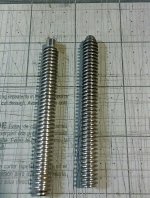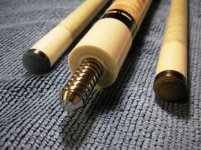That's why some 5/16 14 are piloted.
They have so much slop.
The pilot keeps it tight.
Gina has been using 5/16 18 flat face for ages.
So does Meucci. I don't consider those very tight.
My Randy Mobley has a 5/16 14 flat face and that is tight. No pilot.
I suppose implementation makes a bigger difference.
I've seen some piloted joints that really do square things up...and a majority of piloted that are just for show.


